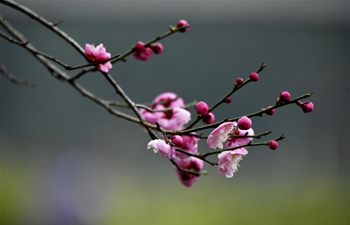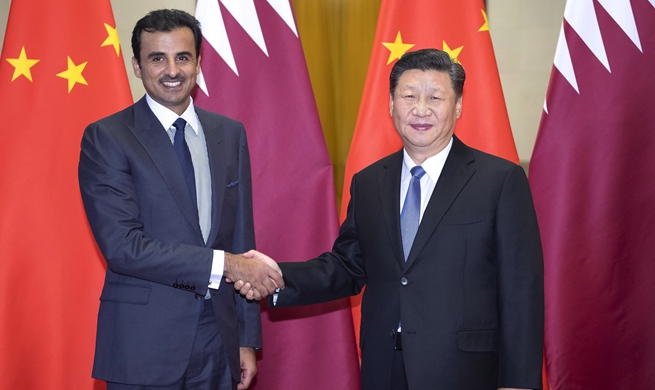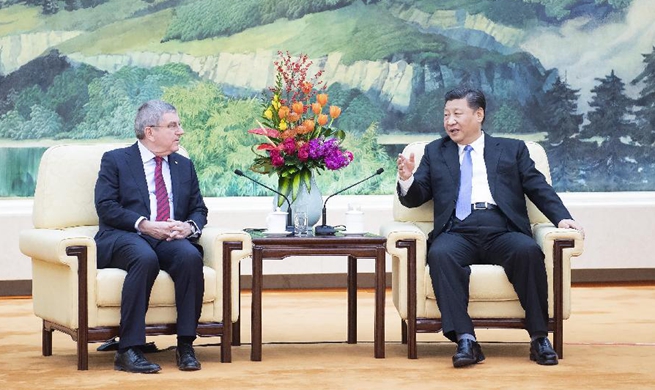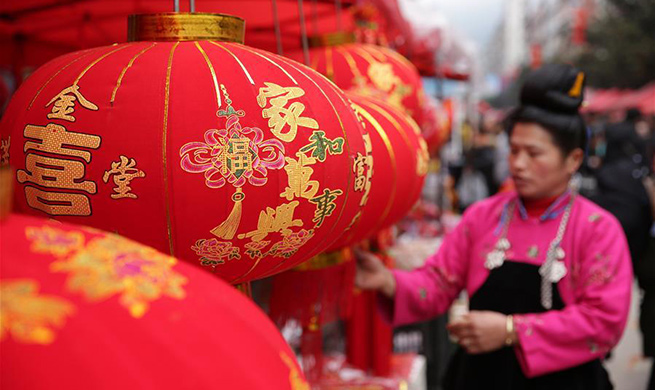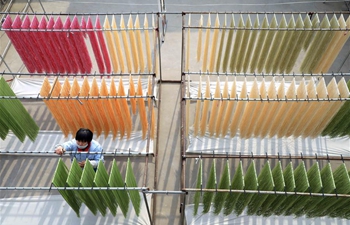by Pankaj Yadav
NEW DELHI, Feb. 1 (Xinhua) -- Even as India goes to general elections in next couple of months, the alliance government at the centre led by the Bharatiya Janata Party (BJP) and headed by Prime Minister Narendra Modi, on Friday tried to woo small farmers, and the middle-class earners whose annual income is up to 500,000 Indian Rupees (approximately 7,143 U.S. dollars).
These two categories of people add up to around 160 million. This is being seen as a bid by the ruling BJP to woo voters by offering sops especially when elections are round the corner.
According to the country's Finance Minister Piyush Goyal, the small and marginalized farmers who own up to two hectares of agriculture land would get 6,000 Indian rupees (around 86 U.S. dollars) deposited in their bank accounts annually, in three equal installments of 2,000 Indian rupees (around 28 U.S. dollars) each.
The central government will have to bear an extra financial burden to the tune of 75,000 crore Indian rupees (11.2 billion U.S. dollars) annually to implement this scheme, said the finance minister.
In all 130 small and marginalized farmers would be directly benefited through this scheme which would come into effect retrospectively from December 1, 2018.
This "direct money transfer" scheme for the farmers was much anticipated, considering the farmers' agitations witnessed in the country in the recent past. The agitating farmers had been demanding better minimum support price (MSP) for their agricultural produce and also waiver of their farm-loans.
In India, agriculture is mostly dependent on monsoons and other adverse climatic conditions like drought or floods. Most farmers still adopt the traditional farming techniques which end up giving poor yields per hectare.
Due to meager annual income generated from small land holdings, the marginalized farmers are not able to support their families and fail to pay up bank loans. In such circumstances, a large number of suicide cases by farmers are reported every year, though the number is said to be on the decline according to government data.
In an attempt to increase farmers' income, the central government also proposed to increase the MSPs by 50 percent for as many as 22 crops. Agriculture continues to the main driver of India's rural economy, said the finance minister.
Then, the government tried to woo the middle-class earners, also called the salaried class. The government announced that no tax would be levied on an individual's annual income of up to 500,000 Indian rupees (approximately 7,143 U.S. dollars).
A total of 30 million middle-class people would be directly benefited who till now had to bear a tax of around 12,500 Indian rupees (approximately 178 U.S. dollars) annually.
When Finance Minister Piyush Goyal announced this budgetary proposal, the Treasury benches hailed the move by thumping the desks for quite some time, amidst raising slogans - "Modi, Modi, Modi".
The salaried class was given another relief of 10,000 Indian rupees (143 U.S. dollars) in the form of Standard Deduction which is proposed to be increased from 40,000 (571 U.S. dollars) to 50,000 Indian rupees (714 U.S. dollars), out of an individual's annual income.
Besides, tax exemption was granted on rent paid on second self-occupied house by an individual in case he or she is posted away from his or her permanent house for a job employment.
Presenting the Interim Budget-2019 at parliament's lower house Lok Sabha, Goyal said that the annual income up to 650,000 (approximately 9,286 U.S. dollars) of such individuals would be totally exempted from tax if they make specific savings into equities like Provident Fund (PF), life insurance etc.
In his budget speech, Goyal said both tax collection and tax base have shown a significant increase due to government initiatives in recent years. He said, "We have moved to a moderate tax regime, with a high compliance."
Besides, the government also proposed to significantly increased the budgetary allocations for the lower castes, or the Scheduled Castes (SCs), Scheduled Tribes (STs). Announcing a 35 percent increase, the finance minister proposed to allocate 76,800 crore Indian rupees (approximately 11.5 billion U.S. dollars) for the welfare of the SCs and STs.
Goyal also said in his speech that the government had recommended to the Goods and Services Tax (GST) council for reducing GST rates for home buyers, in a bid to boost affordable housing for the poor and the middle-class.
Laying emphasis on improved health and living conditions, especially the poor, the minister also announced to set up the 22nd branch of the prestigious "All India Institute of Medical Sciences (AIIMS)" in northern state of Haryana.
"Already 21 AIIMS are either operational or are coming up in different parts of the country. Out of these 21, as many as 14 were announced by the present-day central government over the past four-and-a-half years," said the finance minister.
Hailing the central government's health-for-all scheme - "Ayushman Bharat", the minister said that it aims to benefit 500 million people across the country. As many as one million people have already been benefited under the health scheme, thereby saving a whopping 3,000 crore Indian Rupees (450 million U.S. dollars) for the beneficiaries on medication.
The prices of stents and medicines have been reduced, much to the comfort to the poor who could not afford expensive medication earlier, added the minister.




